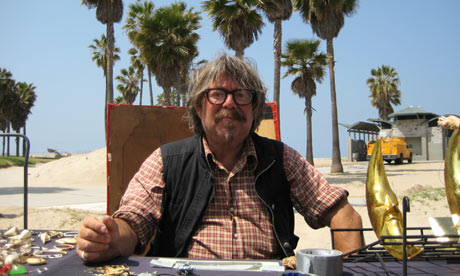
On Tuesday 28 April, 2009, California Governor Arnold Schwarzenegger announced a widespread state of emergency in response to the H1N1 "swine flu" outbreak. His official proclamation mentions "conditions of extreme peril to the safety of person and property", which sounds pretty scary: the sort of language you might associate with a disaster movie scenario of police-enforced curfews and wholesale community lockdowns, or - at the very least - the mandatory wearing of surgical masks in public places.
Longtime residents of California, however, did not feel unduly spooked by their governor's proclamation, because states of emergency are comparatively common - they are basically a way to cut through red tape and free-up all of the available resources needed to tackle any situation that merits concern. Catastrophic fires destroy entire neighbourhoods on an annual basis in the Golden State, floods knock houses off hillsides with equal frequency. Nature's dark side is part of the daily reality here, and the phrase "state of emergency" is usually greeted not with a sense of shock, or panic, but one of familiarity.
In May 2008, Gov. Schwarzenegger announced a state of emergency in Santa Cruz and Santa Clara counties on account of the Summit Fire (named after Summit Road, where the blaze started). And on 27 February this year, the former action movie hero declared a full-blown, state-wide state of emergency to deal with the current water shortage: California is currently suffering its third consecutive year of drought (2008 delivered the driest spring and summer on record).
On the streets of Los Angeles, the day after the proclamation, it's pretty much business as usual. Opportunist labourers wait for offers of day work on Beverly Boulevard; the Range Rover-driving mothers of Beverly Hills drop their kids off at school; California highway patrolmen write citations to motorists who have run stop signs - and there's not a surgical mask in sight.
Nicolas, originally from Mexico, is not especially worried. "I don't know anyone who's sick, thank God," he says. Fishing off the Santa Monica Pier, he's more concerned with the fine he could pick up if he tries to sneak home an under-sized halibut. Nearby, there's a man wearing a protective face mask, but only as a defence against emulsion — closer inspection reveals he's giving the Bubba Gump Shrimp Co. restaurant a fresh coat of paint.
At Venice Beach, a mile or so down the coast, there's no hint of alarm in the ocean-view tattoo parlours and T-shirt shops. Bare-chested joggers with skin the colour of walnuts go about their fitness regimes, the body-builders on Muscle Beach flex a bicep or two, and pale-legged tourists take photos.
Mexican-born Rocio, who runs a stall, is taking the situation more seriously. "No shake hands, no kiss, no hugs," she says, when asked how her friends and family are reacting to the virus. She sells colourful hand-painted seeds in the shape of animals. "The seeds are from Mexico but the animals are made here in LA - which is good, because people are worried about germs. I carry a mask. I wear it if I go to a store and there are lots of people." Just for the purposes of demonstration, she puts on her mask, then puts it back in her pocket.
Inland, in the mainly Hispanic East LA neighbourhood of Echo Park, not far from Downtown, the evening brings out its usual mix of lackadaisical skateboarders, kids in skinny jeans, and families shopping en masse ... but not a hint of emergency. Restaurant valet Rodrigo Reyes has just spoken by phone with one of his five sisters, who is due to get her flu jab in Mexico City - the epicentre of the outbreak - before the weekend. "She's scared," he admits, but says he's not worried about the virus in Los Angeles, even though the confirmed infection tally in California stands at 94 and rising, and news of the first US fatality has just broken.
"I've seen no masks," he says, as Sunset Boulevard lives up to its name in a final burst of glorious light before nightfall. "Nothing."

